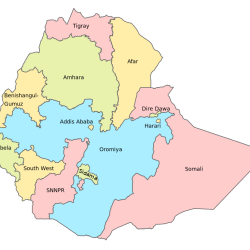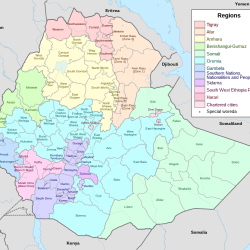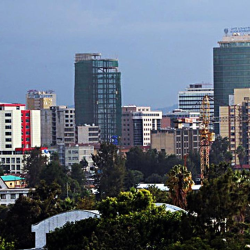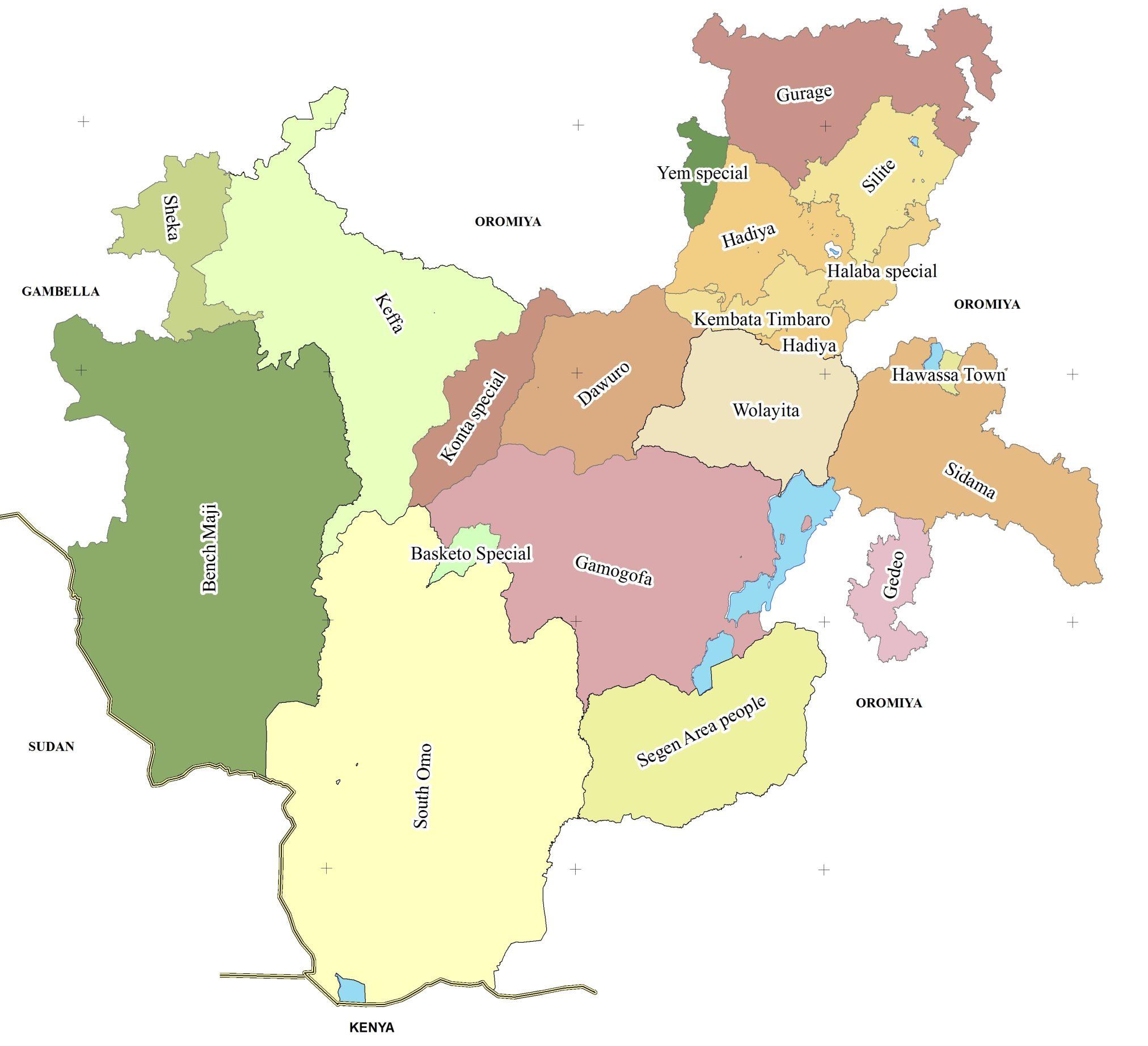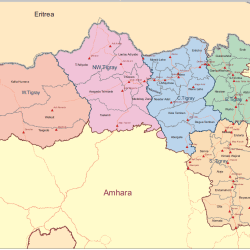Ethiopia’s 10 smallest Regions by land area are:
- Harari Region
- Addis Ababa (City)
- Dire Dawa (City)
- Sidama Region
- Gambela Region
- South West Ethiopia Peoples’ Region
- Tigray Region
- Benishangul-Gumuz Region
- Southern Nations, Nationalities, and Peoples’ Region
- Afar Region
List of Ethiopia Regions according to land size. From least to largest
| Regions | Area (Km2) |
|---|---|
| Harari Region | 334 |
| Addis Ababa (City) | 527 |
| Dire Dawa (City) | 1,559 |
| Sidama Region | 12,000 |
| Gambela Region | 29,783 |
| South West Ethiopia Peoples’ Region | 39,400 |
| Tigray Region | 50,079 |
| Benishangul-Gumuz Region | 50,699 |
| Southern Nations, Nationalities, and Peoples’ Region | 54,400 |
| Afar Region | 72,051 |
| Amhara Region | 154,709 |
| Somali Region | 279,252 |
| Oromia Region | 284,538 |
Ethiopia administrative divisions

Regions
The first level administrative division in Ethiopia is a region, also called kilil, or alternatively regional state.
The 1995 Constitution of Ethiopia established the regions based on ethno-linguistic territories.
Previously, this level was called a province, and though many of the old province and new region names are the same, the entities are not identical and the words region and province are not interchangeable. As of 2022, there were eleven regions.
- Afar Region
- Amhara Region
- Benishangul-Gumuz
- Gambela
- Harari
- Oromia
- Sidama
- Somali
- South West
- Southern
- Tigray
Additionally there are two independently chartered cities which are on the same level as a region.
Addis Ababa
Dire Dawa
Zones
Regions are subdivided into zones. The number of zones varies, but most regions have around six to twelve zones.
The largest region Oromia has over 20 zones, and the two smallest regions have none.
There are some cities which are set up as “special zones”, such as Bahir Dar Special Zone in the Amhara Region.
The earlier equivalent to a zone was called an awrajja, and many zones today are named the same as their earlier awrajja, but the terms zone and awrajja are not interchangeable.
Woredas
Zones are divided into woredas (districts). In Ethiopia, the woredas comprise three main organs: a council, an executive and a judicial.
The Woreda Council is the highest government organ of the district, which is made up of directly elected representatives from each kebele in the woredas.
The representative of the people in each kebele is accountable to their electorate.
Kebele
Woredas are divided into kebele, municipalities. Each kebele comprises around 20 smaller villages.
Kebele is the smallest administrative division. This is sometimes also called tabia or tabiya.
They are at the neighbourhood level and are the primary contact for most citizens living in Ethiopia. Their administrative unit consists of an elected council, a cabinet (executive committee), a social court and the development and security staff. Kebeles are accountable to their woreda councils and are typically responsible for providing basic education, primary health care, agriculture, water, and rural roads.
Ethiopia
The Federal Democratic Republic of Ethiopia is an African country. It shares borders with Eritrea to the north, Djibouti to the northeast, Somalia to the east and southeast, Kenya to the south, South Sudan to the west, and Sudan to the northwest.
Addis Ababa is the capital and largest city.

Official languages: Amharic, Oromo, Somali, Tigrigna, Afar
Currency: Ethiopian Birr
Dialing code: +251
As of 2023, the country is home to around 116.5 million inhabitants, making it the 13th most populous country in the world, 2nd most populous in Africa after Nigeria, and the most populated landlocked country on Earth.
Ethiopia is a multi-ethnic state with over 80 different ethnic groups. Oromo and Amhara are the country’s two largest ethnic groups.
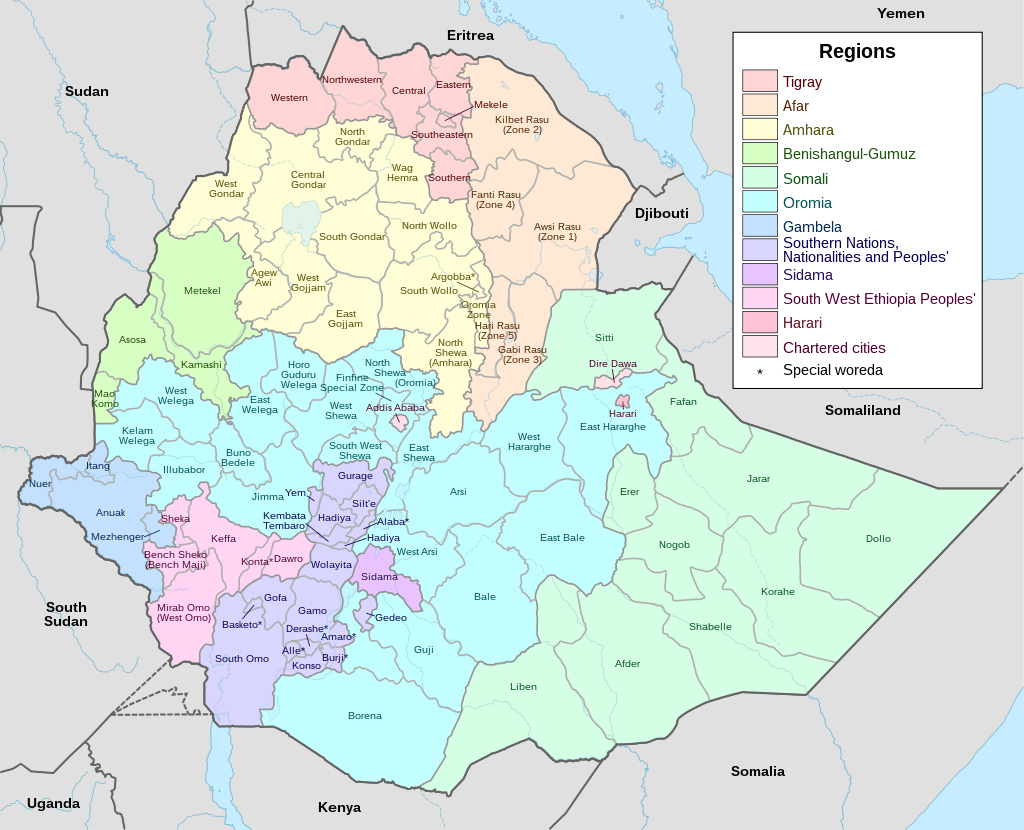
Ethiopia covers land area of 1,112,000 square kilometres (472,000 sq. miles).
Christianity is the most widely professed faith in the country, with significant minorities of the adherents of Islam and a small percentage to traditional faiths.

Ethiopia is administratively divided into four levels: regions, zones, woredas (districts) and kebele (wards).
The country comprises 11 regions and two city administrations under these regions, many zones, woredas and neighbourhood administration: kebeles.
